Walter Benjamin, writer, critic, sensitive reactionary, believed that through detritus – what gets thrown away – we develop insight into our world. His pertinent philosophy reminds us to read carefully into the byproducts of our culture, before catastrophe. Fragments, things that have been discarded or no longer fit a contemporary context, things that have been displaced, broken even, become interesting keys to the past. Their material presence asks questions about the reasons behind their destruction, or displacement. In this way, fragments may serve as important witnesses to, and evidence of, the violence of our histories.

Walter Benjamin, writer, critic, sensitive reactionary, believed that through detritus – what gets thrown away – we develop insight into our world. His pertinent philosophy reminds us to read carefully into the byproducts of our culture, before catastrophe. Fragments, things that have been discarded or no longer fit a contemporary context, things that have been displaced, broken even, become interesting keys to the past. Their material presence asks questions about the reasons behind their destruction, or displacement. In this way, fragments may serve as important witnesses to, and evidence of, the violence of our histories.

Breaking Porcelain, an exhibition at the Cape Town Holocaust Centre in November 2017, told the story of broken Meissen porcelain fragments inherited from the original collection of my great, great grandparents, Charlotte and Gustav von Klemperer, collectors in Dresden before WWII. The story of these shards illuminates the density and complexity, rather than ‘black and whiteness’, of history. It touches the contexts of lost and looted art, provenance research and collecting, family, memory, and the Holocaust.

Breaking Porcelain, an exhibition at the Cape Town Holocaust Centre in November 2017, told the story of broken Meissen porcelain fragments inherited from the original collection of my great, great grandparents, Charlotte and Gustav von Klemperer, collectors in Dresden before WWII. The story of these shards illuminates the density and complexity, rather than ‘black and whiteness’, of history. It touches the contexts of lost and looted art, provenance research and collecting, family, memory, and the Holocaust.

This website is designed to collect and collate those objects, materials, and more abstract ‘things’ that may be broken or displaced, any kind of ‘fragment’ that tells us something about an historical context, about ‘what really happened’. It can be personal, or general.
If anything comes to mind, please write to me at info@galleryofbrokenthings.com. I would love to hear from you.




